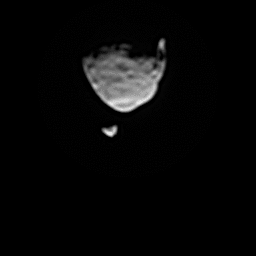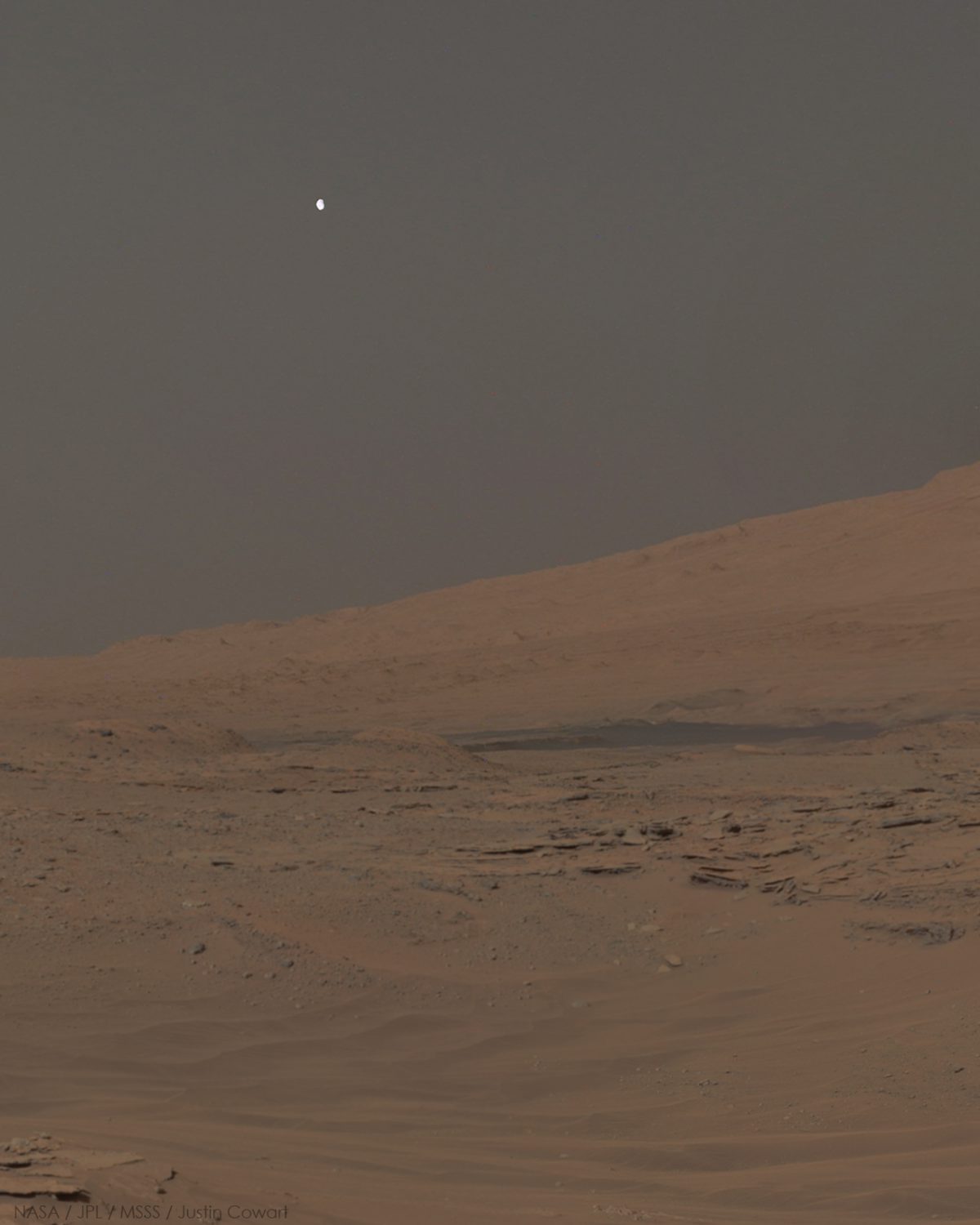Emily Lakdawalla • Mar 06, 2017
MAVEN dodges Phobos, with (maybe) a little help from Curiosity
You may have heard this week that NASA's MAVEN orbiter executed a short rocket burn in order to prevent a future collision with Phobos. If you haven't, here are the key elements of the story:
On Tuesday [February 28, 2017] the spacecraft carried out a rocket motor burn that boosted its velocity by 0.4 meters per second (less than 1 mile per hour). Although a small correction, it was enough that—projected to one week later when the collision would otherwise have occurred—MAVEN would miss the lumpy, crater-filled moon by about 2.5 minutes....
With one week’s advance notice, it looked like MAVEN and Phobos had a good chance of hitting each other on Monday, March 6, arriving at their orbit crossing point within about 7 seconds of each other. Given Phobos’ size (modeled for simplicity as a 30-kilometer sphere, a bit larger than the actual moon in order to be conservative), they had a high probability of colliding if no action were taken.
Phobos' orbit is roughly 30,000 kilometers in circumference, and it travels that distance more than three times a day, so its speed in its orbit around Mars is about 100,000 kilometers per day, or about 4000 kilometers per hour, or about one kilometer per second. Since it's about 30 kilometers in diameter, it takes about 30 seconds for it to cross any one point along its orbit. If MAVEN crossed the plane of Phobos' orbit at that point in any of those 30 seconds -- wham! Thinking about it, the fact that they're extending MAVEN's miss time by only 150 seconds is pretty amazing. The two bodies are going to pass very, very close.
We can predict Phobos' position so well thanks mostly to a long history of Earth-based observations, but orbit prediction has recently received a boost from some unlikely occasional astronomers: Mars rovers. Once in a while, you'll see cool videos shot from the surface of Mars, watching one moon or another pass across the face of the Sun. They have also observed Mars' moons passing by each other in mutual events, or passing by bright stars like Regulus and Aldebaran. These observations are cool in their own right, but they also permit astronomers to make very precise measurements of the positions of the moons.
Annular eclipse of the Sun by Phobos, Curiosity sol 363 Phobos, the larger of the two moons of Mars, passes directly in front of the Sun in this sequence of 89 images taken by Curiosity on August 20, 2013. The pace of the video matches the actual elapsed time of 32 seconds.Video: NASA / JPL / MSSS / Texas A & M University

I asked Mark Lemmon (the Texas A&M researcher who's the driving force behind most of the rovers' astronomical observations) whether Curiosity's imaging of Phobos helped with the predictions that led to MAVEN's orbit adjustment. He wasn't sure, but the early Curiosity observations did contribute to increasing the accuracy of our predictions for Phobos' prediction by a few tens of seconds -- similar in magnitude to the period of danger for MAVEN.
Observations like Curiosity's don't make collision avoidance maneuvers more likely; they actually allow navigators to conduct such maneuvers less frequently. If we didn't know Phobos' position accurately to within a couple tens of seconds, the navigators would have to keep MAVEN out of a much bigger part of Phobos' orbit, modeling Phobos as a noodle more than 100 kilometers long. It just goes to show how better knowledge of our environment leads to a reduction in our overall exposure to risk, and a sharpening of our understanding about which risks really do deserve attention. It's a lesson that can be broadened to a lot of our natural world.

P.S. You may be asking how my book is going. I'm enjoying the sabbatical time to really focus on it, and progress is being made.
Support our core enterprises
Your support powers our mission to explore worlds, find life, and defend Earth. You make all the difference when you make a gift. Give today!
Donate

 Explore Worlds
Explore Worlds Find Life
Find Life Defend Earth
Defend Earth

